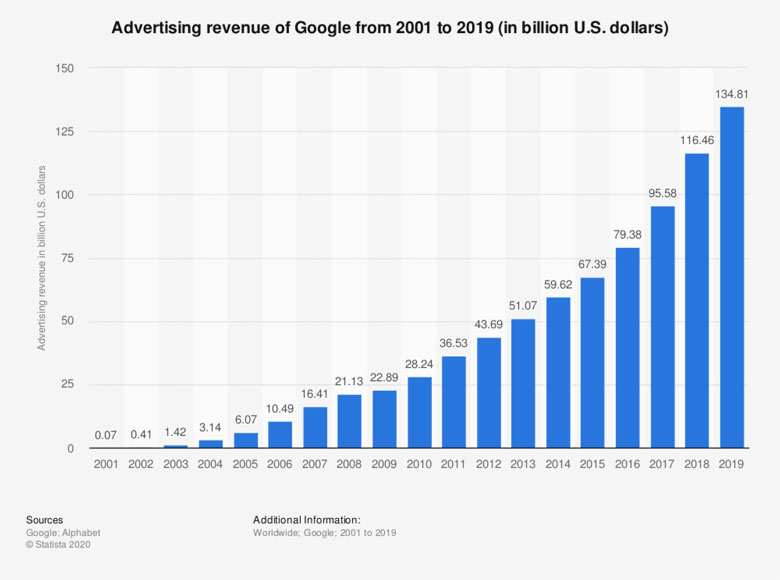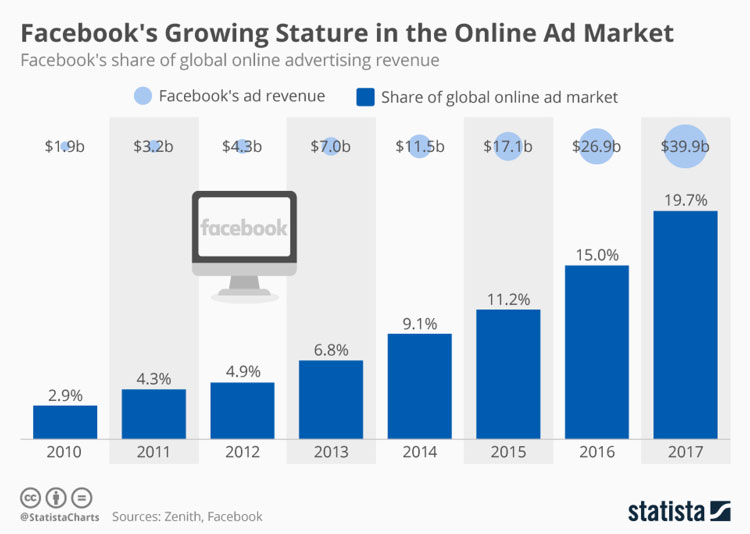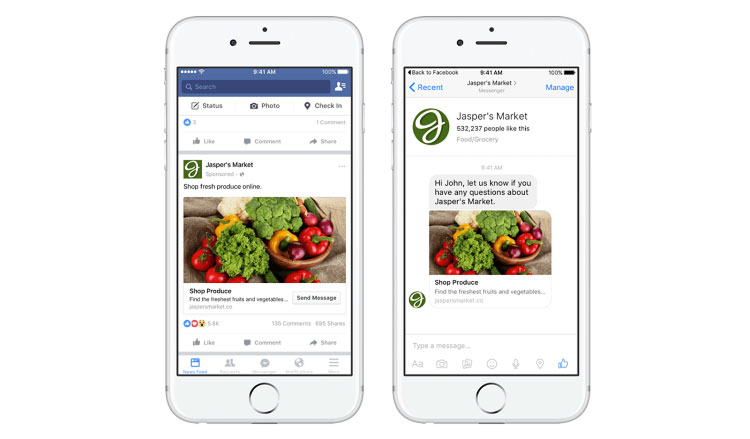Have you ever wondered how many ads do we see a day? In today's world, everywhere you look you are constantly swamped by ads. Buy this! Sign up! Subscribe now!
But how many marketing messages per day are we exposed to exactly? Is it in the hundreds? Thousands, even?
We've done the math, and the answer is... A lot. The figures will have you questioning how the human brain can cope with the constant information overload.
To give you an accurate answer, let's take a look at the growth of advertising and the new tactics advertisers are using to shove as many ads into your brain as physically possible.
We'll also take a look at what consumers are doing to fight back against the constant barrage, and if advertisers have gone too far with their methods.
To get things started though, let's answer the burning question: How many ads do we see a day?
How many advertisements are we exposed to daily?
Back in the 70s, it was reported that the average person saw between 500 to 1600 ads per day. Without online marketing being a thing back then, most ads could be found on billboards, in newspapers, and on TV promoting the latest products.
Even with their limited resources and increased government regulation, marketing firms were always working on ingenious ways to target consumers with new strategies such as "positioning". In a media-oriented culture, advertisers found it necessary to position a product in the consumer's mind, both within the context of its own benefits and strengths in relation to its competitors. This lead to the birth of product placement, one of the most time tested marketing strategies that is still used today.
A few decades later, and advertising had exploded into everyday life. In 2007, the market research firm Yankelovich estimated that the average consumer saw up to 5,000 ads per day, and after surveying 4,110 people, half of them said that advertising was "out of control".
Fast forward to 2025, and although there are no official figures, the average person is now estimated to encounter between 6,000 to 10,000 ads every single day. With the figures nearly double that of 2007, how exactly did we get here? And how did the figure increase so much?
If you haven't guessed already, you can thank the internet and new technologies for the huge increase. As soon as new technology becomes available, advertisers are always looking at how it can be monetized and help share their advertising messages.
In the last 20 years, online and digital marketing has grown exponentially and has created a long list of companies that make most of their profits from digital advertising. And with digital advertising showing no signs of slowing down, this list is only likely to increase, along with the number of ads.
The rise of online advertising
The exponential growth of online advertising can be traced back to the year 2000, when Google launched its AdWords advertising service. Since then, digital marketing has seen a huge increase. Google has managed to grow its advertising revenue every year for the past 25 years, and is projected to make $296.15 billion in advertising revenue during 2025 alone.


But it's not just Google who have been cashing in on the growth of digital advertising. In 2007, Facebook launched its own advertising services, which allows advertisers to target users and audiences based on a range of demographics and information. Shortly after launching, Facebook's ad revenue started to increase exponentially every year and recently hit over $69 billion in advertising revenue in 2019.

This huge rise in digital advertising has had a direct impact on how many ads the consumer person sees in a given day. Back in the 70s, there was no social media, cell phones, or internet. All of these new technologies have opened up a range of new mediums for advertisers to advertise on and increase how many ads we see.
Just through using various social media platforms such as Facebook, Instagram and Twitter, users can be exposed to native advertising without even realizing it. These native ads often look like user-generated posts within a user's feed, but upon closer inspection, it's clear they are sponsored messages. This type of ad alone is responsible for the huge increase in the amount of ads we encounter every day.

But it's not just social media that have had a huge impact on how many daily ads we see. Just by doing a Google search, it's easy to notice just how many sponsored ads appear at the top of the results.
Originally, Google only displayed two or three ads at the top, but over the years, this has slowly increased with the most recent change making it four. This means for every search a user makes; they're likely to encounter four sponsored ads. And with the average user making several Google searches a day, this can quickly add up.
From these two examples, it's clear that digital ads have had a huge impact on many people's lives, and advertisers are using countless new technologies to target users. Here are several more marketing strategies companies are using to get their advertising messages in front of their audience.
Popular brand advertising strategies in 2025
Paid search ads
Very popular with digital marketers, these ads appear on various search engines. Advertisers only pay for these adverts when they receive a click.
In-app banners
With the rise of mobile apps, many of them now have advertisements that support the free use of the service.
Video ads
The largest video sharing platform YouTube is owned by Google and is part of their ad network, which shows video ads to users watching videos.
Streaming ads
Twitch.tv and other streaming platforms have seen enormous growth in recent years and rely on video ads and branding deals as a form of revenue.
Socialmedia ads
Instagram, Twitter, Facebook, Reddit and LinkedIn are all cashing in social media marketing with their pay per click advertising model.
GDPR regulation might have hit email marketing hard but with just an email address, an advertiser can send sequences and funnels to potential customers for months to come.
Digital banner ads
Where digital advertising all began. With remarketing and display ads from Google, banner ads can be found on almost every website.
In-game ads
Believe it or not, many brands have also approached game developers to ensure their brands are included in certain video games.
Product Placement
Found in many TV shows such as Stranger Things, some characters will promote products as it's a great way to reach their target audience.
Adblock to the rescue?
With the average consumer seeing up to 10,000 advertisements every single day, it was only a matter of time before users started to fight back. Visit any large website, and you'll quickly be greeted with a whole range of banners and video ads. Everyone's witnessed the annoying auto-playing ads at some point in their lives and know just how intrusive and sometimes scary they can be.
Since more and more ads today are found online via websites, social media, apps and video content, a small group of people decided to fight back against the constant barrage. Appropriately named "Adblock" these various plugins have been a godsend for users who are constantly swamped with intrusive ads. With just a few clicks, all these annoying ads will instantly disappear and make online browsing a much more pleasant experience.
The first and most popular ad blocker to hit the scene was "Adblock plus" back in 2005. Originally released as a Firefox extension, it quickly spread to other web browsers including Chrome, Edge and Opera.
On paper, the idea of an ad blocker sounds great (at least for users!). By analyzing common patterns and the code of scripts, the plugin can detect when something is an ad and block it from displaying on the user's screen. Of course, it doesn't always work as intended.
Since its inception, there have been many problems with adblockers alike, including false positives, missing certain ads, and even big websites trying to get around them. One of the best examples is when Facebook changed its entire site to specifically stop adblockers from blocking their ads.
And that's not the only problem with adblockers. Over the years certain adblockers such as "Adblock Plus" have been taking payments from large advertisers to whitelist their ads. This means anyone who has the plugin installed will be able to see their ads, defeating the purpose of installing it in the first place. This controversial move made many users angry and saw lots of new variations of adblockers released overnight.
While the idea of an adblocker sounds great in this day and age, with the constant false positives, whitelisting of ads, and websites avoiding them, adblockers actually aren't as effective as you'd imagine. But with the number of ads we see per day increasing at an alarming rate, what's likely to happen in the future.
How many ads will we see in the future?
So what's the future for marketing and how many ads are we likely to see a day in the future?
The traditional marketing methods don't seem to be going anywhere, and with the introduction of new company branding strategies and technology, we can only expect the number of ads to increase.
In recent years, there has been a huge increase in social media platforms and apps such as Snapchat and Pinterest. Both of these are relatively new, and yet both have already built a huge user base. With new platforms also comes an increase in the number of ads. Known as social media marketing, many big brands are continually expanding their marketing efforts to ensure they get the most exposure on every platform. This means that whenever a new social platform is created, expect to see plenty of ads as brands take advantage of the marketing opportunity. With new platforms being created every year, expect to see more social media advertising in the future.
However, with most of the new technologies being digital, the introduction of plugins and software like adblockers will start to greatly decrease the number of ads we see. The first adblocker originally started out on desktop computers, but with the advancement of smartphones, it wasn't long before a mobile version was made. And with technology getting better every year, how long is it until it's possible to block other forms of advertising?
A recent kickstart project showcased the idea of glasses that block all screens, and in an article by Vice, they explored the concept of using them to block ads in the real world.
Could this be the future of adblocking and reducing how many ads we see per day? Possibly, but only time will tell how effective and useful they are. But with a combination of digital and real-life adblockers, this could be the solution to the growing number of ads per day.
How marketers can overcome oversaturation
With consumers encountering over 10,000 ads daily, it’s no surprise that many have developed “banner blindness,” instinctively tuning out promotional content. This saturation challenges advertisers to find innovative ways to capture and retain audience attention.
1. Embrace personalization
Generic ads often fade into the background. By leveraging data analytics, advertisers can craft personalized messages that resonate with individual preferences and behaviors. Tailored content not only grabs attention but also fosters a deeper connection with the audience.
2. Prioritize value-driven content
In a daily flood of advertisements, those that offer genuine value stand out. Whether it’s educational insights, entertainment, or solutions to common problems, content that serves the audience’s interests encourages engagement and builds trust.
3. Diversify ad formats
Relying solely on traditional banner ads can limit reach. Incorporating diverse formats—such as interactive videos, carousel ads, and immersive stories—can capture attention more effectively and cater to varying user preferences.
4. Optimize for context and relevance
Placing ads in contexts where they naturally fit enhances their effectiveness. For instance, a fitness product ad on a health blog aligns with the reader’s interests, increasing the likelihood of engagement.
5. Continuously test and iterate
Regularly testing different ad creatives, headlines, and calls-to-action allows advertisers to identify what resonates best with their audience, ensuring campaigns remain effective and highly-relevant.
Frequently asked questions
How much is spent on advertising spending each year?
The total digital ad spending in the US is expected to reach over $700 billion by 2023.
How does Google make money from advertising?
Google makes money from advertising through its Google Ads service, which allows businesses to place ads on Google's search engine and other platforms.
Are people using ad blocking software to avoid seeing ads?
Yes, research shows that more and more people are using ad blocking software to avoid seeing as many ads.
How has the rise of digital advertising affected the number of ads the average person sees each day?
The rise of digital advertising has significantly increased the quantity of ads the average person sees each day. In the 70s, the average person saw between 500 to 1600 ads per day, but in 2021, it was estimated that the average person encounters between 6,000 to 10,000 ads every single day. This is largely due to the growth of online and digital ads through platforms such as Google and Facebook.
Are print ads still used?
While they are still used, they have become less prevalent as more businesses shift towards digital ads.
How are businesses making sure the ads they show are relevant to their audience?
Most companies are using targeting techniques such as demographics and information to ensure that their ads are reaching the right audience and showing relevant products.
Are there any concerns that advertisers have gone too far with their methods?
Some consumers have expressed concerns that advertisers have gone too far with their methods, with many feeling overwhelmed by the constant bombardment of ads. However, businesses argue that they are just trying to reach their target audience in the most efficient way possible.



